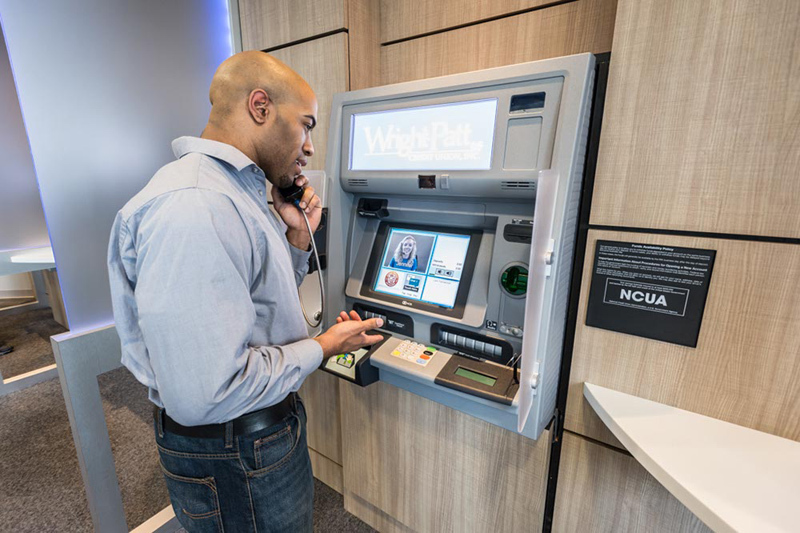Photo courtesy NCR, ncr.com
At the recent Future Branches conference in Austin, TX, where the conference theme is improving the customer experience at retail bank branches, video tellers were top of mind for many bank executives attending. Discussions surrounded topics like what type of video tellers are being offered and the benefits of switching to video tellers.
In our National Benchmarking Study, we surveyed bank customers on their satisfaction with video tellers. Fifty-seven percent of retail banking consumers, whose primary bank offered video tellers, have used them either in a bank branch lobby or drive-through. This percentage may seem high, but what is not clear is the customer’s understanding of what a video teller is. Is it the screen that allows you to see the live teller in the drive-through lane? Is it the interactive version of an ATM (ITM) where the teller is miles and miles away or maybe even in another state assisting customers? In our survey, both scenarios were interpreted as video tellers by the customer, with the latter being the true definition.
Regardless of the consumer’s definition, those who have used video tellers 88% were satisfied (somewhat or very) with their bank’s video teller services and 61% were very satisfied. This compares with 93% satisfied (somewhat or very); 72% very satisfied with their bank branch experience overall. Customers are more satisfied with the banks’ branch service than with the banks’ video teller service. Customers are not finding their video teller experience to be better than standing in front of a live teller.
What may cause the satisfaction to be lower? One reason could be the perception of wait time. Here is an example. A bank who offers video tellers will have 3 lanes with live tellers and one lane with video teller. A customer perceives his/her transaction is in progress if they sent their documents through the transaction tube to the teller, even though they are waiting in line behind customers in the other 2 lanes. The live teller lanes are being handled by one live teller who is working all three lanes at the same time. While in the video teller lane, the customer assesses the wait time of the transaction to be lengthier because it takes them longer to send their documents through the transaction tube. In reality, each individual transaction takes the same amount of time regardless of which lane is chosen. In fact, the video teller lane may even be 30 seconds to one minute shorter. However, the customer’s perception is that the video teller lane is slow. This perception causes the customer to think of it as a negative experience.
Customers believe video tellers benefit the banks; like the ability to reduce costs and improve profitability. Banks need to communicate to their customers how video tellers will benefit them. One benefit is expanded hours of operations. Another is expanded service offerings that would be unavailable or difficult to arrange without large, multi-teller operations. Santander, for example, is rolling out video technology to help consumers connect with mortgage advisors. A service only offered in populated areas with large branches.1 They hope in the future hope is to allow consumers to connect right from their home.
Customers are becoming more comfortable transacting online and banks are expanding their online capabilities and services in response. With apps like Skype and Facetime being used more and more, banks could interact with their customers by remote two-way video banking. At the Future Branches conference last December, one bank executive stood up in a break-out session to say they have killed the transition from live tellers to video tellers. He cited the technology is there to move to transacting on consumers’ personal devices. Done correctly, with available technology, video tellers could make the transactions more human or personable.
1 The Role of Video Banking in Tomorrow’s Branches, banking.com January 31, 2018



